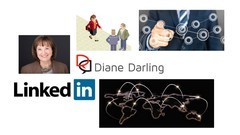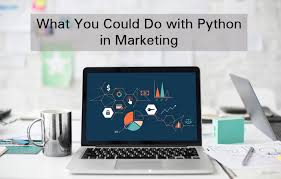LinkedIn Fundamentals – Is your profile the best it can be

LinkedIn Fundamentals – Is your profile the best it can be Free Tutorial Download
The quieter days of summer is a great time to make enhancements to your personal marketing and business development efforts – especially when it comes to your LinkedIn profile.
In today’s digital world, networking online is just as important as cultivating in-person connections, and LinkedIn is the most important social media channel for professionals in any field. LinkedIn enables you to nurture relationships or build your brand more easily and efficiently than ever before.
But here’s the thing – many LinkedIn users think their profile is strong as is or that they know everything there is to know about the platform, when neither is true.
…a robust and complete profile enables you to put your best professional self forward
In fact, only about half of all of users have a 100% complete profile, according to LinkedIn (that means thoughtfully filling out every single field and section that LinkedIn prompts you to fill out). The main reason to do this is quite compelling: it enables you to rank higher in LinkedIn’s search results.
In addition, a robust and complete profile enables you to put your best professional self forward, which will strengthen your brand and help you achieve your personal LinkedIn goals, whether it’s becoming better known as a thought leader/subject matter expert, or landing a new job or more referrals, business leads, speaking engagements, or promoting a new book. Whatever it is, consider LinkedIn your free professional branding platform.
So, let’s go back to basics and get the most important fundamentals of LinkedIn under our belts so that we can move on to incorporate the platform’s many advanced bells and whistles into our personal marketing strategy. The good news is that anyone at any stage of their careers can become a “LinkedIn master.” Now let’s get to work!
LinkedIn 101
Before we dive in, here’s a quick refresh on some LinkedIn basics.
LinkedIn is the world’s largest professional social networking site, with nearly 600 million users in more than 200 countries.
It is used by professionals who want to grow their careers, network, connect and share content. It has transformed the way we make and maintain business connections, how we look for jobs, how we share and find content, how we research companies and individuals, and how we stay connected with our professional network. It has also enabled us to strengthen our brands and generate business leads.
Underscoring the power of LinkedIn, your profile is often the first or second Google search result when someone searches for you online, so if someone ever says to you, “Why should I bother creating a LinkedIn profile?” just mention that. If you don’t have a LinkedIn profile today, it is very noticeable.
How are clients using LinkedIn?
Your clients are using LinkedIn for the same reasons that you are – to stay in touch with contacts and colleagues their professional network, to share and consume content (news and industry information), to follow organizations, their alma maters and influencers, to join groups, and to promote their successes.
But most importantly, clients are using the platform to conduct due diligence on their outside counsel.
LinkedIn helps them validate their hiring decisions. They want to learn more about their outside counsel choices and to discover degrees of separation (by looking at 1st, 2nd and 3rd degree connections in common) as well as schools and former places of employment that you may share with them. Any commonalities and connections can be very helpful in building relationships on LinkedIn and making someone feel more comfortable with you.
Profile basics
Here are some simple things to keep in mind as you enhance your LinkedIn profile.
One important note – turn off the setting that lets your network know that you are making updates to your profile before you start making changes. You can do this right from the Settings & Privacy section, under “Sharing Profile Edits.” Toggle the button to “No” until you have finished making these major edits or else you will get a lot of congratulatory likes and messages about silly things such as updating your profile or adding a comma here and there, which is just not news.
Profile photo: First impressions really do matter and today, a good profile photo is the norm on your LinkedIn profile. Including a profile photo makes your profile 14x(!) more likely to be viewed by others. Ensure that your photo is a high-resolution, professional headshot that is correctly sized (ideally 400 by 400 pixels) in which you look personable. You’d be surprised just how many casual (and unfriendly/unapproachable) headshots there are on LinkedIn, and those can really hurt your brand. Just smile in your photo, don’t be pixilated, use a recent photo (hey it’s okay if you are bald!) and think about visually conveying the kind of lawyer who you would want on your side.
Personal cover photo: You can upload an image to serve as a cover photo on your profile, giving your LinkedIn profile a little more personality. Just keep in mind that LinkedIn is a professional social network, so choose a photo that reflects your personal brand but is also professional. For example, my cover photo is a cityscape of New York City – the city in which I live and work. I have seen some of my connections use their firm’s logos – but I would encourage you to think more broadly because people often switch jobs and because I think your brand is defined much more than by the firm at which you work. Also, ask for permission before you use any images from your firm. My firm’s chairman uses an image with his favorite inspirational quote – this is easy to create in free online graphic design tool, canva.com. Whatever you do – don’t use images from your personal collection, such as anything involving animals, causes or your favorite sports teams. And make sure the image is a high-resolution, correctly sized (1584 x 396 pixels) JPG, PNG or GIF file under 8MB.
Your headline is one of the most important parts of your LinkedIn profile…
Headline: Your headline is one of the most important parts of your LinkedIn profile. For starters, it is pulled into the search results of some browsers, as well as LinkedIn searches. You only get 120 characters to describe yourself, so use this space wisely! When you first create your profile, your default LinkedIn headline is populated with just your current job title and company name. You don’t need that information in your headline because that information will also be included in the experience section. Instead focus your headline on who you are professionally. Describe your expertise, your value proposition, your unique brand value and what differentiates you from your peers. Try to showcase your strengths and subject-matter expertise without seeming boastful. Also, LinkedIn scans headlines for keywords in its searches – so pay close attention to every word you use in your headline.
Remember, your headline is much more than your job title. If you don’t create your headline, LinkedIn will default to your current job title and that’s just boring.
Customize your public profile/vanity URL. A shortened, custom LinkedIn URL is much cleaner looking and web savvy. You can make your personal profile more professional (and easier to share) by customizing your LinkedIn public profile URL so that it looks like this: www.linkedin.com/in/yourfirstnamelastname.
To customize your LinkedIn URL, follow the instructions right on LinkedIn’s web site. Note: If you have a common name, you may need to play around a bit with the URL by adding your middle initial or “esq,” as your name may already be taken.
Contact info: Surprisingly many people still do not include their email address, phone number or other important links in the contact information section on their LinkedIn profiles (gasp!). This is a huge mistake! You must make it easy for people to find you or they will quickly give up. Please promise me that you will go into your profile today and check to ensure that your contact information is there and that it is updated.
LinkedIn messages: Along the same lines, please check your LinkedIn inbox often. I have seen many people lose out on speaking engagements and even new business opportunities as a result of not regularly checking their messages. You can set up notifications to go directly to your email if you prefer.
Write a killer summary: Your LinkedIn summary is not the same as your web site bio. In fact, it can’t be because LinkedIn will cut you off at 2,000 characters, and web content should be less formal in tone. Some people even write their summary in the first person, although most still opt for writing it in the third person, but with a more casual tone (as if you were talking to someone about what you do over coffee). Never use formal surnames such as Mr. or Ms. – you’d be surprised how many lawyer bios at major firms still include those titles! Include keywords for SEO purposes. Organize it in short paragraphs and don’t start each one with your name, please vary up the sentence construction. Avoid using legal jargon and buzzwords and remember to show (versus tell) about your skills and talents.
Experience: Include each of your relevant jobs (after graduation) in the work history section with a short description of what you accomplished during your tenure there. Note that while you do not need to go into too much detail, you should list the years that you held each role and if you were promoted during a period of employment. If you were only at a position for a short period of time (a few months), I would personally leave it off and instead explain the gap to someone in person.
Media: In both the experience and education sections you can include documents, photos, links, presentations and videos. Using media can help make your profile stand out, but don’t go overboard on these – add only a few, such as a brochure or video on which you worked. And whatever you do, please don’t include your thesis from college or graduate school. Those should stay in a box in your parents’ attic.
Skills: This section enables you to display professional skills given to you from other LinkedIn members. Did you know that you can reorder your skills or delete them? You can choose the order of how the skills are displayed that makes the most sense for you. This comes in handy when a random skill winds up there (like someone recently endorsed me for “law” – that’s nice and all, but guess what? I’m not a lawyer, so I probably shouldn’t include that one. I did have a nice chuckle about it and then promptly deleted it from my profile).
Recommendations: While it’s nice to say nice things about people you know, you may eventually regret recommending someone down the line and in some fields, such as law, it is frowned upon to give and receive recommendations pursuant to their state attorney advertising rules (sorry to be Debbie Downer here). My advice on this to steer clear of this area on such a public platform like LinkedIn and save giving recommendations for the private sector.
Additional information: LinkedIn has a laundry list of optional sections you can add to your profile, including certifications, publications, projects, honors and organizations. My recommendation is to include the things you feel add value to your profile in the order of most importance. Make sure to update these sections at least once a year, adding, editing and deleting speaking engagements, articles, committee and volunteer positions.
Groups: There is still value in being a member of key industry groups on LinkedIn where you can find likeminded professionals, and share content and expand your network. Each time you add a company to your list of prior jobs, you automatically follow that company but not its accompanying alumni group, so you manually need to find the corresponding alumni group and often request membership. You should at the very least belong to the alumni groups of every educational institution you attended and prior law firm (defunct or not – even defunct firms have robust alumni networks and gatherings!). Look for relevant industry associations with the key being to find those of which your clients or prospects belong. If you are coming up dry on how to find these, look at the groups of a few of your competitors. I always find those profiles to be treasure troves of information and when lawyers at my firm ask me if they should connect with competitors I give a resounding “yes” as my answer for this very reason.
Engaging with your network
While I’m not going to get into specifics on ways in which to engage with your connections and creating and posting content on LinkedIn in this article, I did want to touch on a few basics when it comes to using LinkedIn to build relationships, which you can do by making others your primary focus. Take a look at my article, “Build a Stronger Professional Network Today with These LinkedIn To-Do’s” for more advanced tips on this topic.
Leverage @mentions: LinkedIn users can tag or @mention other users and companies in their status updates, like how you can do it on Facebook, Twitter or Instagram. Here’s the thing about @mentions – they really help to build relationships with key individuals in your network. If you tag a LinkedIn member by using the @ symbol immediately followed by their name in your status update, they will get alerted that you mentioned them, and their name will also link to their profile in the status update itself.
Congratulate others: One of the smartest things you can do on LinkedIn is to use the notifications section to your advantage and congratulate important connections on their successes, such as job moves and anniversaries, promotions or professional milestones (winning an award, publishing book, being named to a board or speaking at a conference – you catch my drift). It gives you a reason to be in touch with these individuals. Remember that no one dislikes a compliment ever.
Personalization: The short of it is that you should always personalize connection requests (reference something from when you met or a commonality) but note that LinkedIn makes it hard to do this from your mobile device.
Show that you care: Take the time to like, comment or share on important connections’ posts. This helps to build relationships and keeps you top of mind with individuals in your network who may need someone with your expertise down the line.
LinkedIn is no longer an online resume – it’s your digital reputation.
LinkedIn is so much more today than just an online resume. It’s your digital resume and the importance of the platform cannot be understated. It is well worth the time of any professional – from the most senior executive to the most junior member of the workforce.
I hope that after reading this article you feel compelled to spend the time to create a strong LinkedIn profile and get comfortable with the platform inside and out (and that doing either of those doesn’t seem so daunting).
Download the LinkedIn app to your smartphone as well because most of what you can do on LinkedIn’s desktop version can now be done on the mobile app (with the exception of some profile edits and some more advanced features such as editing certain areas and article writing on LinkedIn Publisher that we will delve into in another article), and it’s a great way to maximize your commuting time.
Once your profile is completed and you feel comfortable with how LinkedIn works, you can then move on to think about how to meaningfully engage with your connections, because what’s the point of spending all this time building a killer LinkedIn profile if you aren’t going to use the platform to build relationships? Start small and have a realistic goal for daily social media engagement. Every day, like and/or share others’ posts in your industry and at your firm. Start creating content of your own and sharing it. But be humble. And make sure to link in with the people who you meet in your professional life each week, as well as me! Remember that your LinkedIn network is like a garden and needs constant care and nurturing in order to thrive.
*
Note: This article originally appeared in JD Supra.
[Stefanie Marrone helps law firms effectively tell their stories and find their unique voices. Over the last 17 years, she has worked with some of the most prominent and innovative law firms in the world, developing and executing global revenue generating business development and communications strategies, including media relations, branding, and multichannel content marketing and social media campaigns. She is very passionate about using social media for lead generation and brand building. She has a diverse range of experience in both Big Law and mid-size/small-law firms. Connect with her on LinkedIn and follow her latest writing on JD Supra as well as her blog The Social Media Butterfly.]
Download LinkedIn Fundamentals – Is your profile the best it can be Free
https://bayfiles.com/z3xfg6n4pf
https://drive.google.com/file/d/10AWjhqlALN4-IOGJ7m1NjG7o_miBBH8w/view?usp=sharing
https://uptobox.com/t1z9yr89a4st




